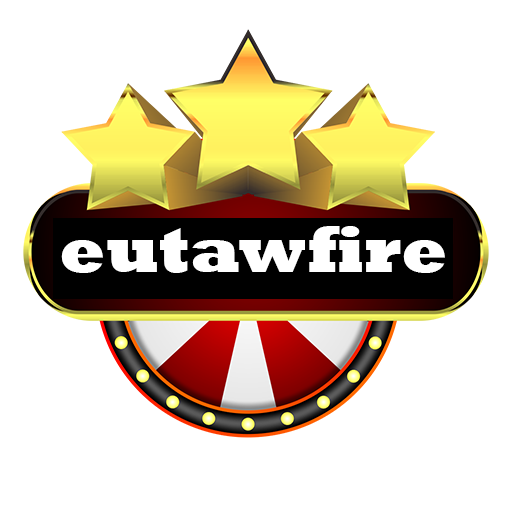To improve your work velocity, encourage the team to attend every scrum meeting; it brings team members on the same page. The burndown chart operates using sprints only instead of coupling its functionality with epics like Jira. However, if you’re looking for additional justification, I’ve listed three benefits for using these reports as part of your project management plan. Burndown charts are handy because they provide additional insight into your team’s productivity, so long as your work estimates are accurate. They help you reevaluate progress as obstacles or new tasks come up. Simply adjust your tasks and timeline settings to see whether or not you’re still on track.

If the burndown chart shows a sharp drop during the sprint, this might be a sign that work has not been estimated accurately, or broken down properly. Monitor your project’s progress regularly, and plot it against the remaining work, creating a comparison between estimated and actual work done. Burn charts can be used to present the project’s team velocity. Velocity is a measure that represents the productivity rate, within a predefined interval, for which deliverables are created, validated and approved. At the end of the fifth day, each of the tasks should add up a total of 80 hours as estimated in the first step. It is a simple and easy way to check the progress of a project in scrum and agile management.
Step 4: Afterward, read the actual effort line
At the endpoint, the ideal line crosses the x-axis and shows there is no work left to be done. This line is based on estimates and therefore is not always accurate. By keeping an ongoing, constantly updated record of Sprint progress versus the allocated time, teams can stay informed of how well they’re doing. If time is starting to slip away from them, they get a timely warning instead of a rude awakening. Although Scrum professionals created the burndown chart for Agile-based projects, the burndown chart Scrum works for any project that relies on measuring progress over a given period.
The quantity of work remaining appears on a vertical axis while the time that’s passed since the beginning of the project is placed horizontally on the chart, showing the past and the future. The burndown chart is displayed so everyone on the agile project management team can see it and is updated regularly for accuracy. This effort is your ideal baseline, using the available hours throughout the Sprint. This starting point represents the total amount of work that needs to be finished.
Removing variability in time estimates
The visual representation of progress can be more accurate when your user stories and tasks are broken into smaller chunks that have measurable and meaningful outcomes. Go ahead and use the burndown chart to plot the progress of your ongoing projects/sprints to get hands-on experience in creating and reading burndown charts. Alongside, KnowledgeHut’s Project Management class will help you become a future-ready project manager and level up your career. A burndown chart is a graphical representation of the work remaining versus time in a project or sprint.
The team’s velocity is subtracted from the top, and Scope changes will adjust the bottom of the bar. Note that the bars can sometimes grow, showing that new points have been added on. This benefit mitigates the risk and helps the team address problems as they occur instead of waiting until the end of the project. Many of us respond better to visual stimuli such as pictures, graphs, and illustrations, and we learn or remember more this way. For example, articles are more effective when they include charts or images to help reinforce the piece’s main point and keep the reader’s interest.
How to Use a Burndown Chart in Agile & Scrum
Team managers use burndown charts as a way to see the overall progress of the project and the work remaining. Developers may also use burndown charts to measure progress or to show the team what’s left to do in an Agile sprint. https://www.globalcloudteam.com/ Many agile teams consult burndown charts as part of daily standups. They can be a great conversation-starters and motivational tools. But keep in mind that the scope of your sprint should not change once it has begun.

Rakesh Varma has over 11.5 years of industry experience in the Supply Chain Management solutions domain under product development, business development, and implementation teams. He has led product support, project implementation & management, quality management, and incident management driving result-oriented programs and solutions to ensure customer success. It also explains if the progress made has quantitatively deviated from the ideal work line and if so – by how much.
Determine the scope of your project.
A burnup chart illustrates the team’s completed work compared to the total scope. It also tells whether you are behind or ahead of schedule, or whether any potential impediments are likely to cross your path. In this scenario, the team might have overestimated the project’s timeline. After everything I’ve said about Microsoft Project in the past, this tool came through where many others fell short. In true Microsoft fashion, it’s not an easy process creating a burndown chart using this platform, but the final result is detailed and thorough.

If your predictions are way off, you will not learn much by looking at a burndown chart. For example, if a user story is estimated to take five hours of effort but it really requires eight, it will appear as though your team is falling behind. But the problem is not your team’s pace — the inaccurate estimate is the culprit.
Why you should use a burndown chart
The ideal line is a projected slope that depicts how the team progress would look like in a perfect world. Nicholas Morpus is the product management https://www.globalcloudteam.com/glossary/burndown-chart/ software expert for The Ascent, with experience working in the B2B space. In fact, this card is so good that our experts even use it personally.
- A burnup chart illustrates the team’s completed work compared to the total scope.
- Typically, the slope starts at the top of the chart glued to the Y-axis and “burns down” until it hits the ground, and all tasks are finished.
- The burndown chart is mainly used as a visual aid to quantify progress made and pending tasks against the time passed and time remaining for the completion of project.
- Notice that total reconciliation balance, represented by the Blue line, is decreasing in line with the actual end date.
- Burndown charts may look simple, but there are a few steps that you’ll need to complete before finalizing your chart.
- It shows that the team started slowly but eventually caught up.
- If you need a high-level view of your project, ProjectManager has a real-time dashboard that tracks your sprint as it happens.
The burndown chart doesn’t show any changes, for example, in the scope of work as measured by the total points in the backlog. Although burndown charts are an extremely valuable resource, it comes with its pitfalls. Scrum teams commit three classic errors, throwing off the project’s rhythm and causing unnecessary delays. Team members plot and update the daily progress, showing the actual effort compared to the ideal effort estimation.
Steps to Create Burndown Chart:
Once you’ve completed your story points, you can begin drawing your ideal remaining time and your actual time. These lines will likely look slightly different unless your actual work ended up being the precise effort estimated at the beginning. While it can show where your velocity is slowing down, it cannot tell you why your progress has stalled.
